It has been 6 months since the last post was made about the project, and now we are finally ready to show some of the progress made. As the dataset of ck3 characters grew larger, I couldn't train the Neural Network on normal computers anymore. So I had to spend quite a fair bit of time to learn how to run the training of the network on cloud accelerator services But now, the first prototype is finally here, it is not perfect, but the results are impressive at the same time. A lot of the converted portraits don't really fit their picture counter-part. Yet, there is also quite a few examples who are really well rendered, proving that the network truly is learning a distribution that models the human face to portrait conversion. Here are a few cherry-picked examples from me and torngasuk:


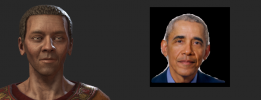
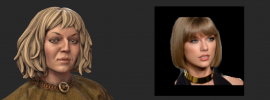
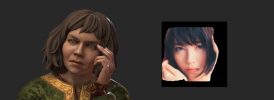
And then here's some more:
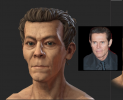
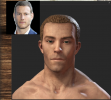
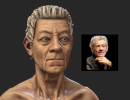
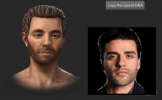


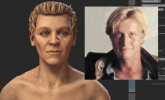
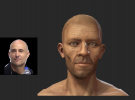
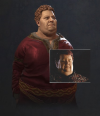

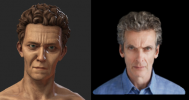
*the network hasn't learned gender and skincolor prediction yet. So some these examples received minor modifications like age change and skin-color change. Or fat reduction. The network at time seem to give too much fat to people, but when you cut a bit of the fat the prediction is pretty good.
This network has been trained on the torngasuk_dataset, which contains approximately 23k data samples of 8900 unique characters. Due to an error of mine every dna file was parsed as male, so the network saw all those characters as males, which may be the reason it is not as performing when inputting female pictures. I then proceeded to retrain the model with the corrected dataset. Surprisingly, it worsened the performance of the network by a lot. This may be due to the fact that recognizing gender added another layer of complexity to the problem, gender recognition also, is more of a categorical classification problem, telling if someone is male or female, rather than a regression problem where you have to output values. I have quite a few ideas on how to tackle this problem so that will take some testing. But even as it is, purely scaling up the dataset should do the trick, performance scale up with the quantity of data fed into it. But as the dataset scale it will cost more and more to train it. So I don't really have the most freedom when testing.
Beside that., I would like to thank torngasuk again for helping me in this project.
The github repo
The new dataset





And then here's some more:











*the network hasn't learned gender and skincolor prediction yet. So some these examples received minor modifications like age change and skin-color change. Or fat reduction. The network at time seem to give too much fat to people, but when you cut a bit of the fat the prediction is pretty good.
This network has been trained on the torngasuk_dataset, which contains approximately 23k data samples of 8900 unique characters. Due to an error of mine every dna file was parsed as male, so the network saw all those characters as males, which may be the reason it is not as performing when inputting female pictures. I then proceeded to retrain the model with the corrected dataset. Surprisingly, it worsened the performance of the network by a lot. This may be due to the fact that recognizing gender added another layer of complexity to the problem, gender recognition also, is more of a categorical classification problem, telling if someone is male or female, rather than a regression problem where you have to output values. I have quite a few ideas on how to tackle this problem so that will take some testing. But even as it is, purely scaling up the dataset should do the trick, performance scale up with the quantity of data fed into it. But as the dataset scale it will cost more and more to train it. So I don't really have the most freedom when testing.
Beside that., I would like to thank torngasuk again for helping me in this project.
The github repo
The new dataset
Last edited:
- 17
- 15
- 2

